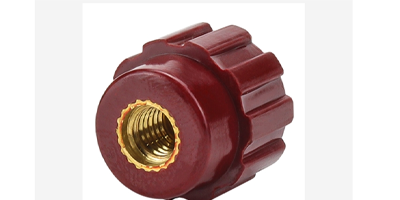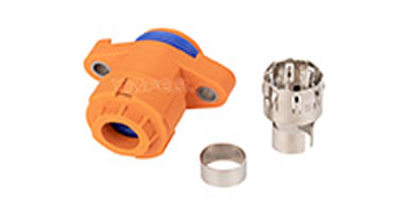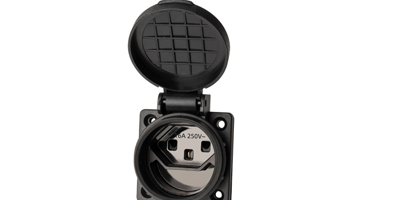In the realm of electrical connections, Screw Bolt Type Terminal Bolts play a crucial role in ensuring reliable power transmission. To maintain their optimal performance and prolong their service life, proper maintenance and care are essential.
I. Regular Visual Inspection
Checking for Physical Damage
Inspect the threads of the screw bolt. Look for signs of thread wear, such as thinning or stripping. Damaged threads can prevent proper tightening and may require replacement of the bolt. In industrial environments where vibrations are common, thread damage is more likely to occur.
Examining the Contact Surfaces
The contact surfaces between the terminal bolt and the wires or other connectors are critical. Check for signs of oxidation, corrosion, or dirt buildup. Oxidation and corrosion can increase the resistance at the contact point, leading to heat generation and potential power losses. Use a clean, dry cloth or a soft brush to gently remove any loose debris or corrosion products. If heavy corrosion is present, more advanced cleaning methods or replacement of the affected parts may be necessary.
II. Tightening and Loosening Checks
Proper Tightening Torque
Ensure that the screw bolts are tightened to the correct torque. Over-tightening can damage the threads or the connected components, while under-tightening can result in a loose connection. Refer to the manufacturer's specifications for the recommended tightening torque. Use a torque wrench to accurately apply the correct amount of force. In a power distribution panel, for example, improper tightening of terminal bolts can lead to overheating and potential fire hazards.
Periodically check the tightness of the bolts, especially in applications where vibrations or temperature changes are present. Vibrations can cause bolts to loosen over time, and temperature fluctuations can affect the expansion and contraction of materials, potentially loosening the connection. A simple visual inspection and a gentle tug on the connected wires can help determine if the bolts need to be retightened.
Loosening Difficulties
If a bolt is difficult to loosen during maintenance or replacement, do not apply excessive force immediately. First, try using a penetrating oil or lubricant to help break any rust or corrosion that may be causing the binding. Allow the lubricant to penetrate for a sufficient amount of time before attempting to loosen the bolt again. If the bolt still cannot be loosened, consider using specialized tools such as bolt extractors or consult a professional technician to avoid damaging the terminal block or surrounding components.
III. Cleaning and Corrosion Prevention
Cleaning the Terminal Bolt
Use a mild detergent and warm water solution to clean the terminal bolt and its surrounding area. This can help remove any grease, dirt, or other contaminants that may have accumulated over time. Ensure that the terminal is completely dry before reconnecting any wires or applying power. A damp terminal can cause short circuits or corrosion.
For stubborn dirt or corrosion, a small amount of vinegar or a commercial electrical contact cleaner can be used. However, be careful not to use harsh chemicals that could damage the plastic or metal components of the terminal. After using a chemical cleaner, rinse thoroughly with clean water and dry.
Corrosion Prevention Measures
Apply a thin layer of anti-corrosion grease or a corrosion inhibitor to the terminal bolt, especially in environments where moisture or corrosive gases are present. This can help protect the metal surfaces from oxidation and corrosion. In marine or industrial settings, where saltwater or chemical fumes are common, regular application of corrosion prevention products is crucial.
Consider using terminal covers or enclosures to shield the terminal bolts from environmental factors. These covers can help prevent dust, moisture, and other contaminants from reaching the connection, reducing the risk of corrosion and improving the overall reliability of the connection.
IV. Replacement Considerations
When to Replace
If a terminal bolt shows significant signs of damage, such as severe corrosion, thread stripping, or a cracked body, it should be replaced. Additionally, if the bolt is consistently loose or cannot maintain a proper connection despite tightening efforts, replacement may be necessary. In some cases, if the electrical performance of the connection deteriorates over time, as indicated by increased resistance or voltage drops, replacing the terminal bolt may improve the situation.
Choosing the Right Replacement
When selecting a replacement terminal bolt, ensure that it is of the same type and 规格 as the original. Consider factors such as the current and voltage ratings, wire size compatibility, and the material of construction. Using an incorrect replacement bolt can lead to improper connections, safety hazards, and potential damage to the electrical system. Consult the equipment manual or the manufacturer's guidelines to make an informed choice.
By following these maintenance and care techniques, Screw Bolt Type Terminal Bolts can continue to provide reliable electrical connections over an extended period, ensuring the smooth operationBy following these maintenance and care techniques, Screw Bolt Type Terminal Bolts can continue to provide reliable electrical connections over an extended period, ensuring the smooth operation of electrical systems and reducing the risk of downtime and costly repairs.







